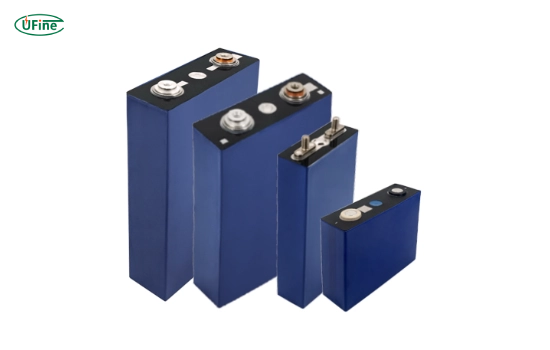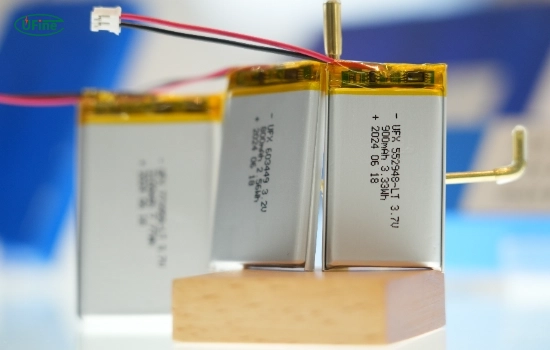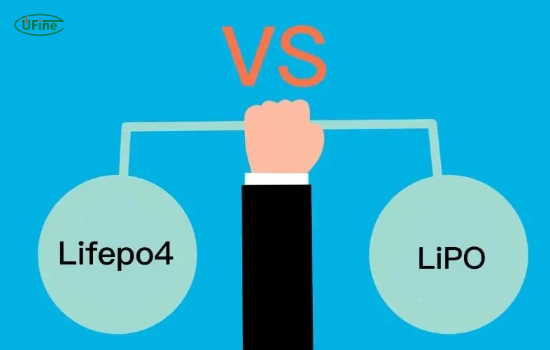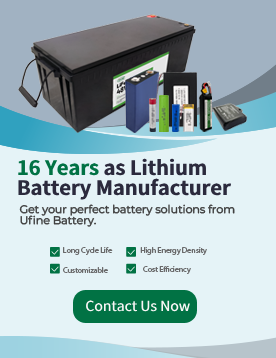Part 1. LiFePO4 vs lithium-ion polymer: Quick comparison table
| Feature | LiFePO4 | Li-ion Polymer |
|---|---|---|
| Energy Density | 90-120 Wh/kg | 150-200 Wh/kg |
| Cycle Life | 2000-7000 cycles | 500-1000 cycles |
| Safety Risk | No thermal runaway | Require protection circuits |
| Cost (per kWh) | $150-$250 | $100-$150 |
| Best For | Solar storage/Electric vehicles | Smartphones/Drones |
Key Takeaway: LiFePO4 offers 4x longer lifespan and superior safety, while Li-ion Polymer provides 40% higher energy density for compact devices.
Comparing LiFePO4 and Lithium-ion Polymer batteries is an essential journey into the realm of energy storage solutions. This comprehensive article delves deep into the core differences, strengths, and weaknesses of these two prominent battery technologies.
Part 2. What are LiFePO4 batteries?
A lithium iron phosphate battery is a lithium-ion battery with lithium iron phosphate as the cathode material. Lithium battery cathode materials are mainly lithium cobaltate, lithium manganate, lithium nickelate, ternary materials, lithium iron phosphate, and so on. In a lithium iron phosphate battery that is charging, the positive electrode in the lithium-ion Li is through the polymer diaphragm to the negative electrode; in the discharge process, the negative electrode in the lithium-ion Li is through the diaphragm to the positive electrode relocation.
Part 3. LiFePO4 battery advantages
Long life
The number of cycles is more than 2000 times. Under the same conditions, lithium iron phosphate batteries can be used for 7 to 8 years.
Safe to use
Lithium iron phosphate batteries have undergone stringent safety testing and will not burst even in traffic accidents.
Fast charging
Using a special charger, 1.5C charging for 40 minutes can fill the battery.
High-temperature resistance
Lithium iron phosphate battery thermal wind value can reach 350 to 500 degrees Celsius.
Large capacity
The battery is often in full, not discharged under work conditions; the capacity will be rapidly below the rated capacity value; this phenomenon is called the memory effect. Like nickel-metal hydride, nickel-cadmium batteries have memory, and lithium-iron phosphate batteries do not have this phenomenon. The battery, regardless of what state, can be charged with the use of the battery, with no need to be discharged and then charged.
Lightweight
The volume of a lithium iron phosphate battery with the same specification capacity is 2/3 of the volume of a lead-acid battery, and the weight is 1/3 of the lead-acid battery.
Part 4. LiFePO4 battery disadvantages
Poor low-temperature performance:Around -20 degrees Celsius, the battery attenuation will reach about 55%.
Low energy density:Every time it reaches 150wh/kg, the battery volume/weight will be larger.
Long battery life:But the battery pack life is short, usually around 500 times.
Expensive:High production cost.
Unstable battery process performance:Poor performance consistency.
Part 5. What are lithium-ion batteries?
The lithium-ion battery is a kind of secondary battery that uses lithium-containing compounds as the positive electrode and realizes charging and discharging through the round-trip shedding and embedding of lithium ions between the positive and negative electrodes of the battery during the charging and discharging process. Lithium-ion batteries are composed of a positive electrode, a negative electrode, an electrolyte, and a diaphragm.
Part 6. Lithium-ion battery advantages
High voltage
The working voltage of a single cell is as high as 3.7-3.8V (lithium iron phosphate is 3.2V, which is three times that of Ni-Cd and Ni-MH batteries.
Large specific energy
The actual specific energy of 555Wh/kg, i.e., the material can reach 150mAh/g or more than 3-4 times the specific capacity of Ni-Cd, 2-3 times the Ni-MH, has been close to its theoretical value of about 88%
Long cycle life
Generally, it can reach more than 500 times, and even more than 1000 times, lithium iron phosphate can reach 8000 times. For small-current discharge appliances, battery life will increase their competitiveness.
Good safety performance
No harm, no memory effect. As the predecessor of Li-ion lithium batteries, lithium metal dendrites are easy to form short-circuit, reducing its field of application: Li-ion does not contain cadmium, lead, mercury, and other environmentally polluting elements; part of the process (such as sintered, Ni-Cd batteries exist in the “memory effect,” a serious constraint on the use of batteries, but Li-ion does not have this problem. Ion does not have this problem.
Small self-discharge
The self-discharge rate of Li-ion is about 2% after one month of storage at room temperature, which is much lower than 25-30% of Ni-Cd and 30-35% of Ni-MH.
Fast charging
1C charging capacity can reach more than 80% of the nominal capacity in 30 minutes, and phosphorus-iron batteries can reach 90% of the nominal capacity in 10 minutes.
Operating temperature
The working temperature is -25~45°C, and with the improvement of electrolyte and positive electrode, it is expected to be widened to -40~70°C. Non-pollution: free of heavy metals and toxic substances, it is a real green energy.
Part 7. Lithium-ion battery disadvantages
High internal impedance
Because the electrolyte of lithium-ion batteries is an organic solution, its conductivity is much smaller than that of nickel-cadmium batteries; nickel-metal hydride batteries in water deep-soluble electrolyte, so the internal impedance of lithium-ion batteries is about ten times larger than that of nickel-cadmium batteries or nickel-metal hydride batteries.
Large change in operating voltage
When the battery is discharged to 80% of its rated capacity, the voltage change of the NiCd battery is very small (about 20%). In comparison, the voltage change of the Li-ion battery is very large (about 40%). This is a serious disadvantage for battery-powered equipment. However, due to the large variation in discharge voltage of lithium-ion batteries, it is also easy to detect the battery’s remaining charge accordingly.
Faster decline
At higher discharge rates, the capacity decline is also greater. With a discharge rate of 0.5C, lithium-ion batteries’ and nickel-cadmium batteries’ capacity reduction is comparable. Still, with a high discharge rate (> 1C), lithium-ion battery capacity is seriously reduced. Therefore, lithium-ion batteries cannot be discharged at high currents; the maximum discharge rate is 1 C. When the discharge rate exceeds 1 C, the capacity and life of the battery will be reduced.
Part 8. LiFePO4 vs lithium-ion polymer: 5 Critical differences you must know
1. Chemical Stability & Safety
LiFePO4 batteries use an iron phosphate cathode with an olivine crystal structure, which prevents oxygen release even at 500°C. This makes them inherently non-combustible, passing nail penetration and overcharge tests without fire. In contrast, lithium-ion polymer batteries with cobalt-based cathodes require additional protection circuits to manage thermal runaway risks.
2. Temperature Performance
Operational range comparison:
- LiFePO4: -20°C to 60°C (80% capacity retention at -20°C)
- Li-ion Polymer: 0°C to 45°C (40% capacity loss below -10°C)
Field tests show LiFePO4 maintains 95% efficiency at 50°C vs 75% for LiPo batteries.
3. Energy Density Comparison
| Type | Volumetric Density | Gravimetric Density |
|---|---|---|
| LiFePO4 | 220 Wh/L | 90-120 Wh/kg |
| Li-ion Polymer | 300 Wh/L | 150-200 Wh/kg |
Example: A 10Ah LiPo battery can be 30% smaller than LiFePO4 equivalent.
4. Lifespan & Cost Efficiency
Cycle Life:
- LiFePO4: 2,000-7,000 cycles (80% DoD)
- Li-ion Polymer: 300-500 cycles (100% DoD)
In solar applications, Ufine’s LFP-100Ah model shows only 15% capacity loss after 5 years of daily use.
5. Cost Analysis
Initial Cost:
- LiFePO4: $0.25-$0.35/Wh
- Li-ion Polymer: $0.15-$0.25/Wh
Long-term Value: Over 10 years, LiFePO4’s $0.03/cycle cost beats LiPo’s $0.12/cycle by 75%.
Part 9. LiFePO4 vs lithium-ion polymer: Top 7 FAQs
Which battery lasts longer: LiFePO4 or lithium polymer?
LiFePO4 batteries last significantly longer.
- Cycle life: LiFePO4 offers 2,000-7,000 cycles (80% depth of discharge), while lithium polymer lasts only 300-500 cycles (100% depth of discharge).
- Real-world example: The Ufine LFP-12V100Ah retains 85% capacity after five years of daily use.
Is it worth paying 30% more for a LiFePO4 battery?
Yes, for long-term use, LiFePO4 is cost-effective.
- 10-year cost: LiFePO4 costs around $0.03 per cycle, while lithium polymer costs $0.12 per cycle.
- Replacement frequency: A lithium polymer battery would need to be replaced 3-5 times to match a single LiFePO4 battery’s lifespan.
Can a lithium-ion charger charge a LiFePO4 battery?
No, using a lithium-ion charger for LiFePO4 can be risky.
- Voltage mismatch: Standard lithium-ion chargers use a 4.2V cut-off voltage, while LiFePO4 only requires 3.65V.
- Recommended solution: Use a dedicated charger like the Ufine LFP-SC01 for 25% better charging efficiency.
Can LiFePO4 batteries explode if overcharged?
LiFePO4 batteries are much safer than lithium polymer.
- Test results: When overcharged by 125%, LiFePO4 batteries only heat up by 8°C, while lithium polymer batteries may swell and smoke.
- Safety tip: Using a smart BMS like the Ufine BMS-4S20A is recommended.
Which battery performs better in cold temperatures?
LiFePO4 has a clear advantage in low temperatures.
- Capacity retention at -20°C: LiFePO4 retains 80%, while lithium polymer drops to 40%.
- Field test: LiFePO4 batteries used in Arctic expeditions maintained 70% capacity at -30°C.
Related Tags:
More Articles
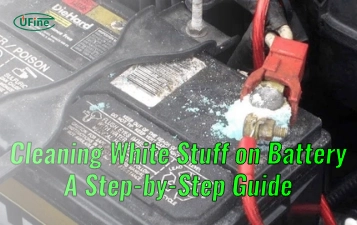
White Stuff on Battery Terminals: A Step-by-Step Cleaning and Maintenance Guide
White stuff on battery terminals is corrosion. Learn how to clean it safely, prevent damage, and keep your battery running strong with simple steps.
Understanding How Glass Mat Batteries Work: Technology, Benefits, and Limitations
Glass mat batteries power cars, RVs, and solar systems. Learn how they work, their benefits, and what to consider before choosing one.
A Buyer’s Guide for AA Size Lithium Battery
Discover the power of AA size lithium batteries—types, voltage, capacity, and more! Learn how to choose the best one for your needs. Read now!
Li-Ion Battery Prices – Where to Buy Cheap & Safe
Discover li-ion cell prices, key market factors, and how to find affordable custom batteries from top suppliers like Ufine Battery.
How Long Does a 2200mAh Battery Last?
Discover everything about 2200mAh batteries—types, charging time, lifespan, and whether it’s enough for your device.
